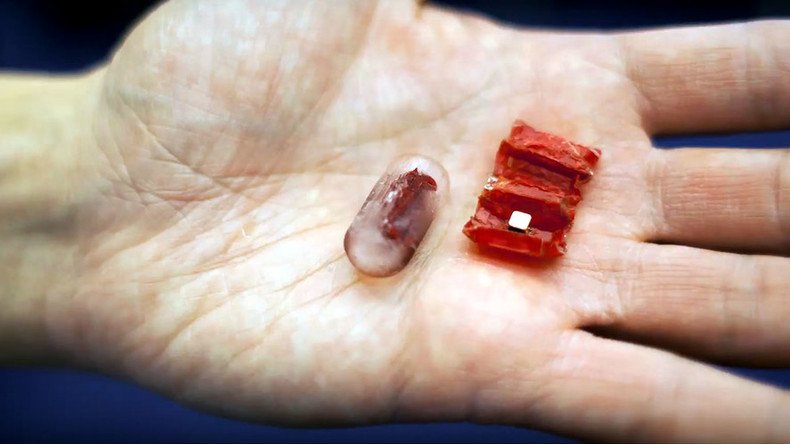'Origami meat robot' is a thing now, thanks to science and pig intestines (VIDEO)

"A swallowed piece of pig intestine that unfolds in your stomach to stitch you up from the inside" probably isn’t your first choice for dinner, but that’s just what a team of scientists recently developed as a way to save lives.
The latest incarnation in 'origami' robotics comes from researchers at MIT, the University of Sheffield, and the Tokyo Institute of Technology.
They're hoping their mini robot will be able to crawl across a stomach wall to patch a wound or remove swallowed objects like watch (aka button) batteries.
A dozen different possibilities were considered by the team for the robot's material, but having “spent a lot of time at Asian markets and the Chinatown market looking for materials,” they settled on dried pig intestine found in sausage casings.
Robot performs soft-tissue surgery without human operatorhttps://t.co/BvisHEElbIpic.twitter.com/8yQt9CPXq3
— RT America (@RT_America) May 5, 2016
Inside the folds of the meat accordion is a permanent magnet which both steers the robot with external fields and allows it to pick up batteries lodged in a stomach, which happens to thousands of children every year in the US, according to figures from the Centers for Disease Control and Prevention (CDC).
Some of the robot's motion comes from paddling its fin-like shape in the stomach's fluids.
The red pig gut is folded into a transparent capsule for easy consumption, though it is not known if it can show users the true nature of the Matrix.
With an estimated 3,500 batteries swallowed each year in the US alone, there is an issue with batteries coming into contact with the esophagus or stomach causing an electric current that produces hydroxide, which in turn burns tissue.
“It’s really exciting to see our small origami robots doing something with potential important applications to health care,” says professor Daniela Rus of MIT. “For applications inside the body, we need a small, controllable, untethered robot system.”
The robot’s developers initially unveiled their creation in 2015, but at the time, it was a plastic-based creation which folded itself up when heated.












